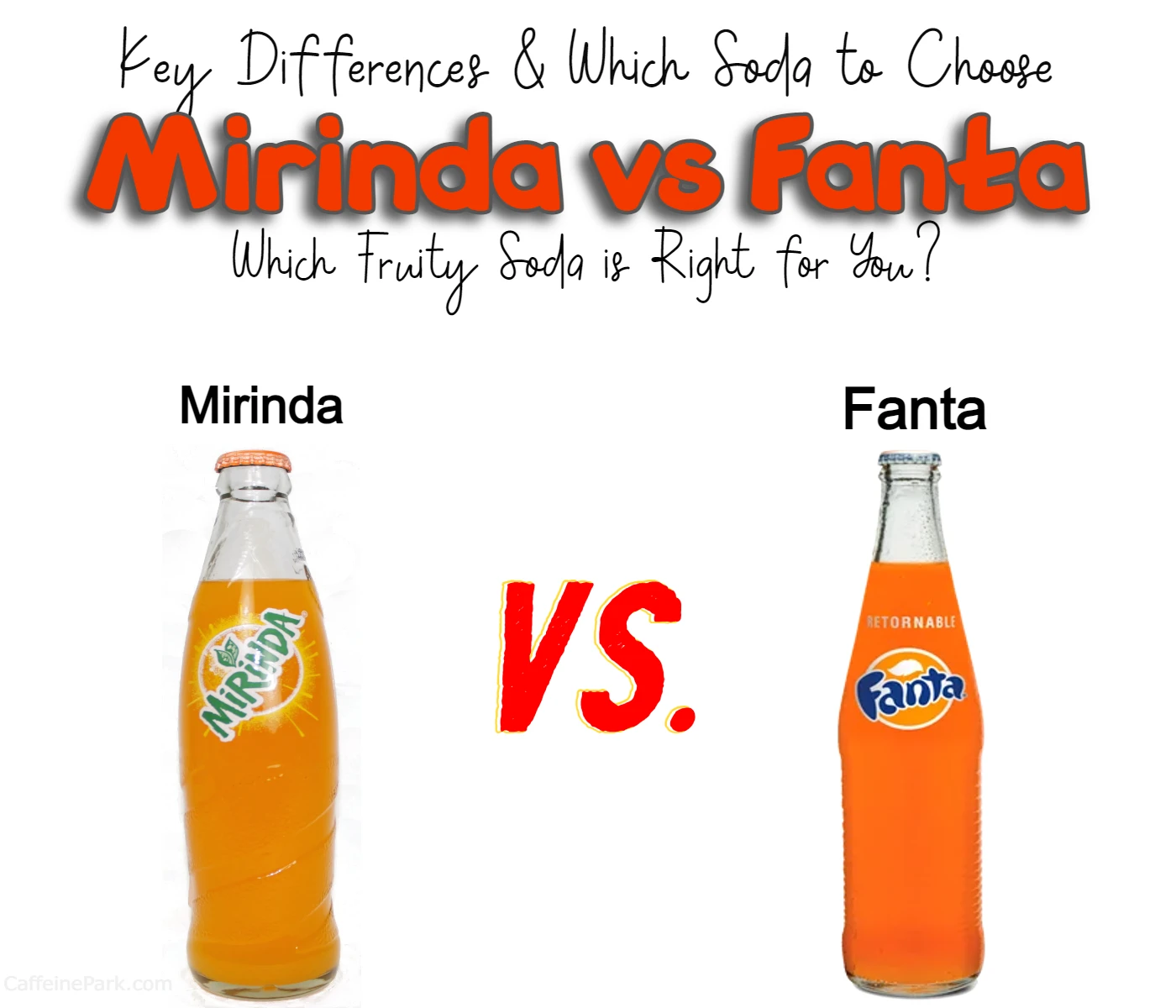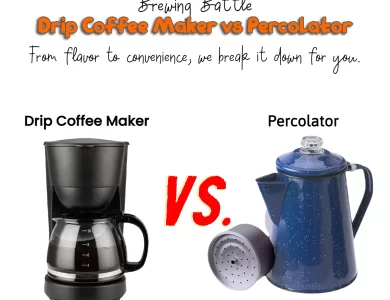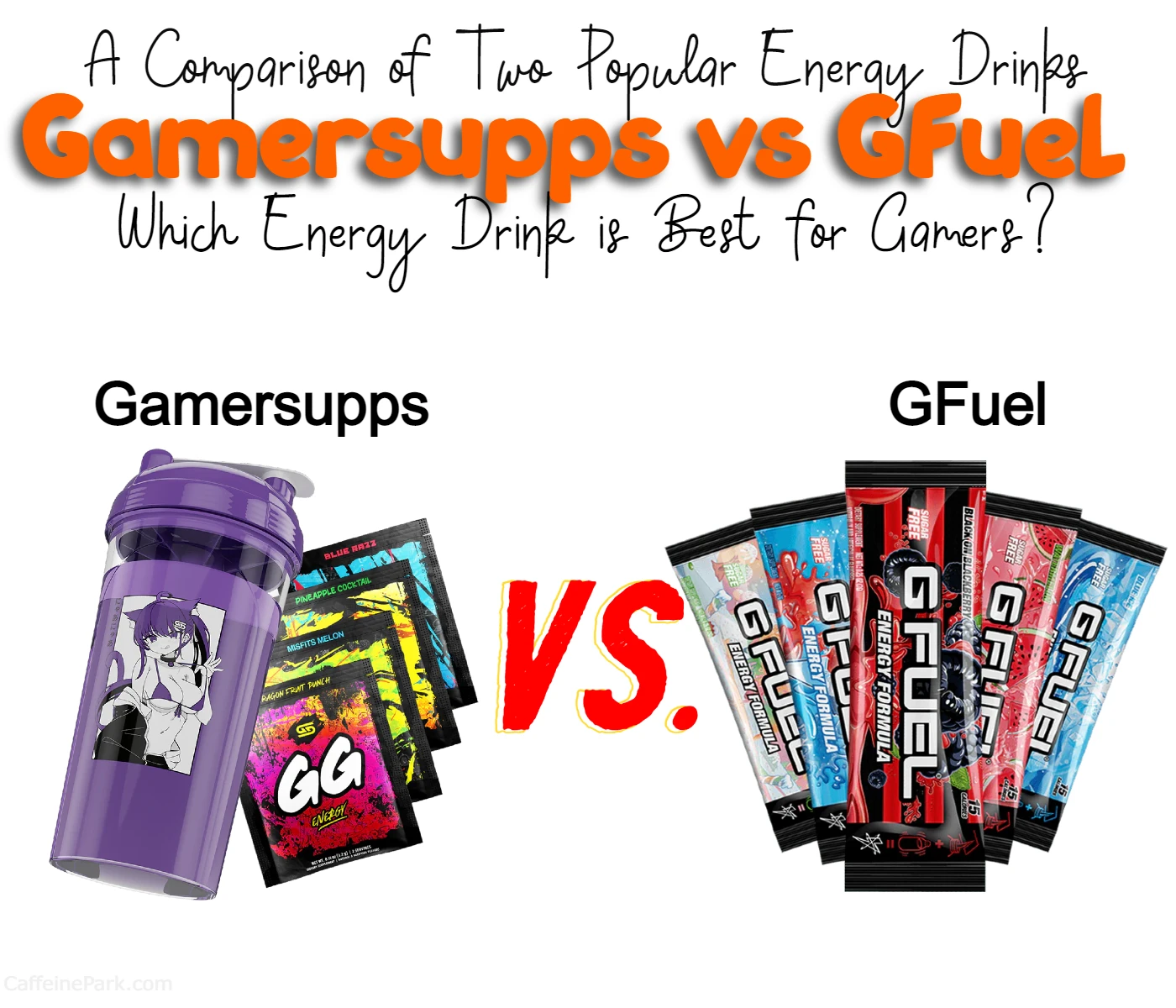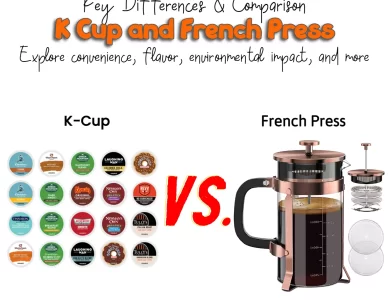
Are you a fan of fruity sodas but can’t decide between Mirinda and Fanta? Look no further! In this blog, we’ll explore the key differences between these two popular soft drink brands.
Let’s start with the flavors. Fanta offers a wide range of fruity flavors, including orange, grape, strawberry, and pineapple, to name a few. Mirinda also offers several flavors, but they tend to be more limited in variety. However, Mirinda does offer some unique flavors in certain countries, such as green apples and grapefruits. So if you’re looking for a wider variety of flavors, Fanta might be the way to go.
Next up, let’s talk about the ingredients. Both Mirinda and Fanta contain high fructose corn syrup and artificial flavors, but Mirinda has a slightly lower sugar content. Additionally, Fanta contains caffeine in some of its flavors, while Mirinda does not. Of course, it’s important to remember that both sodas are still sugary drinks and should be consumed in moderation.
Here’s a quick table summarizing the differences between Mirinda and Fanta:
| Aspect | Mirinda | Fanta |
|---|---|---|
| Flavor Variants | Orange, Strawberry, Pineapple, Grape, Green Apple, and more | Orange, Strawberry, Pineapple, Grape, Green Apple, and more |
| Carbonation | Lively and effervescent | Smoother and more subtle |
| Sweetness Options | Regular sweetness | Regular and sugar-free options |
| Ingredients | Carbonated water, sugar, flavors, citric acid, preservatives | Carbonated water, sugar, flavors, citric acid, preservatives |
| Packaging and Branding | Vibrant and energetic | Colorful and playful |
| Availability | Global presence | Global presence |
| Cultural Significance | Popular in India, Mexico, Egypt, Thailand, and more | Iconic in Germany, Brazil, and various other countries |
| Sustainability | Commitment to reducing environmental impact | Commitment to sustainability goals |
| Dietary Variants | N/A | Fanta Zero and Fanta Light |
Remember, the choice between Mirinda and Fanta ultimately comes down to personal preference. Give both a try and see which one you enjoy more!
Differences between Fanta and Mirinda
Mirinda, the brainchild of the PepsiCo company, first hit the shelves in 1959. It was introduced as a carbonated fruit-flavored beverage that aimed to offer consumers a tangy and invigorating experience. Over the years, Mirinda has expanded its range of flavors, tantalizing taste buds with options like orange, strawberry, pineapple, grapefruit, and more. Mirinda has become known for its bold and vibrant flavors, making it a popular choice among those who crave a zesty and refreshing drink.
Fanta, on the other hand, has a slightly older history that dates back to 1940s Germany. During World War II, the Coca-Cola company faced challenges in importing its flagship product to Germany due to trade restrictions. In response, they created Fanta as a local alternative using available ingredients. Fanta quickly gained popularity and has since become a global phenomenon, delighting consumers in over 190 countries. With its wide variety of flavors and playful and colorful branding, Fanta has built a reputation for being a fun and flavorful beverage choice.
The Flavorful Showdown: Taste and Variety
When it comes to taste and variety, both Mirinda and Fanta offer a diverse range of flavors to suit every palate. Let’s dive into the delicious world of flavors that these two soft drink giants have to offer.
Mirinda: Bursting with Zingy Flavors
Mirinda is all about delivering a zing of flavor with every sip. Its signature orange flavor has been a classic favorite for decades. The tangy and citrusy notes of Mirinda Orange provide a refreshing burst that quenches your thirst and leaves you wanting more. However, Mirinda doesn’t stop at orange. It has expanded its repertoire to include a range of other exciting flavors, such as Mirinda Strawberry with its sweet and juicy taste, Mirinda Pineapple with its tropical twist, Mirinda Grapefruit with its tangy zest, and more. These diverse flavor options make Mirinda a popular choice for those seeking a refreshing and adventurous taste experience.
To help you visualize the variety of flavors Mirinda offers, here’s a table showcasing some of the popular flavors:
| Flavors | Description |
|---|---|
| Orange | Tangy and citrusy with a refreshing burst |
| Strawberry | Sweet and juicy, perfect for fruit lovers |
| Pineapple | Tropical twist with a tangy edge |
| Grapefruit | Zesty and tangy, offering a refreshing citrus kick |
| Raspberry | A burst of fruity goodness with a hint of tartness |
Fanta: Fun and Fruity Delights
Fanta takes pride in its playful and diverse flavor lineup. From classic options to innovative combinations, Fanta has something to satisfy everyone’s taste buds. While Fanta also offers an orange flavor, its profile differs slightly from Mirinda’s. Fanta Orange presents a sweeter and more mellow citrus taste, making it a popular choice for those who prefer a smoother flavor experience. In addition to orange, Fanta boasts an extensive range of other delightful flavors, such as Fanta Strawberry, Fanta Pineapple, Fanta Grape, Fanta Green Apple, and more. Fanta’s commitment to providing fruity and enjoyable drinks has earned it a special place in the hearts of soft drink enthusiasts worldwide.
Let’s explore some of the exciting flavors offered by Fanta in the table below:
| Flavors | Description |
|---|---|
| Orange | Sweet and mellow with a smooth citrus taste |
| Strawberry | Bursting with luscious strawberry flavor |
| Pineapple | Tropical goodness that transports you to an island getaway |
| Grape | Rich and grapey, a true classic for grape soda lovers |
| Green Apple | Crisp and refreshing with a tangy apple twist |
The Bubbly Battle: Carbonation and Texture
Carbonation and texture play an important role in the overall drinking experience of soft drinks. Both Mirinda and Fanta are carbonated beverages, but they offer slightly different sensations on the palate.
Mirinda: The Fizz That Pops
Mirinda prides itself on its lively carbonation and effervescence. When you crack open a bottle or can of Mirinda, you’ll be greeted with a satisfying burst of bubbles that dance on your tongue. The carbonation in Mirinda is known for being crisp and vigorous, providing a lively mouthfeel that adds an extra dimension to the drinking experience. If you enjoy a soda with a noticeable fizz and a vibrant sensation, Mirinda’s effervescence might be just what you’re looking for.
Fanta: Smooth and Effervescent
Fanta, while still a carbonated drink, offers a slightly different texture compared to Mirinda. The bubbles in Fanta are typically smaller and gentler, resulting in a smoother and more subtle effervescence. This creates a velvety mouthfeel that some find appealing, especially if they prefer a softer carbonation experience. Fanta’s texture allows the flavors to take center stage, with the bubbles complementing the overall drinking sensation without overpowering it.
The Sweet Factor: Sugar Content and Sweetness Level
When it comes to the sweet factor, it’s important to consider the sugar content and sweetness level of these soft drinks. As consumer preferences have evolved, both Mirinda and Fanta have adapted their recipes to offer alternatives that cater to various dietary needs and taste preferences.
Mirinda: Sweet and Vibrant
Mirinda is known for its vibrant and bold flavors, and part of that comes from a touch of sweetness. The sugar content in Mirinda varies depending on the flavor, but it generally falls within the range of other regular carbonated soft drinks. If you prefer a soda with a noticeable sweetness that enhances the fruity flavors, Mirinda’s level of sweetness is likely to satisfy your taste buds.
Fanta: Sweetness with Options
Like Mirinda, Fanta offers a range of sweetness levels to accommodate different preferences. Fanta provides options for both regular and low-sugar variants, allowing consumers to choose the one that aligns with their desired level of sweetness. For those who prefer a lighter sweetness, Fanta Zero offers a sugar-free alternative without compromising on taste. This flexibility makes Fanta a suitable choice for individuals who want to enjoy a soft drink while being mindful of their sugar intake.
Nutritional Information
When it comes to nutritional information, both Fanta and Mirinda are similar. They both contain high fructose corn syrup, artificial flavors, and caffeine (in some flavors). However, they do have slight differences in their nutritional information.
For example, a 12-ounce can of Fanta Orange contains 160 calories, 44 grams of carbohydrates, and 44 grams of sugar. A 12-ounce can of Mirinda Orange, on the other hand, contains 150 calories, 39 grams of carbohydrates, and 39 grams of sugar. So, if you’re watching your sugar intake, Mirinda might be the slightly better choice.
Marketing and Advertising: Connecting with Consumers
Marketing and advertising strategies play a crucial role in building brand awareness and connecting with consumers. Mirinda and Fanta employ different approaches to engage their target audiences.
Mirinda often emphasizes its bold flavors and the refreshing burst of zest it delivers. Its marketing campaigns often feature energetic visuals, catchy slogans, and scenarios that highlight the vibrant and lively nature of the beverage. Mirinda’s advertising aims to evoke a sense of excitement and adventure, appealing to consumers seeking a bold taste experience.
Fanta, on the other hand, is known for its playful and fun marketing campaigns. Its advertisements often feature colorful and imaginative scenarios, capturing the youthful spirit of the brand. Fanta’s messaging revolves around the idea of unlocking fun and enjoying life’s playful moments. Through its marketing efforts, Fanta seeks to create an emotional connection with consumers, positioning itself as a drink that brings joy and adds a touch of magic to everyday experiences.
Packaging: Eye-Catching Appeal
Packaging and branding play a significant role in capturing consumers’ attention and conveying the personality of a soft drink. Both Mirinda and Fanta have distinctive visual identities that contribute to their appeal.
Mirinda is known for its vibrant and energetic branding. The packaging features bold, eye-catching colors that correspond to each flavor variant. The brand’s logo is dynamic and playful, reflecting the lively nature of the beverage. Mirinda’s branding exudes a sense of excitement and adventure, making it visually appealing and easily recognizable on store shelves.
On the other hand, Fanta adopts a colorful and fun branding approach. The packaging design showcases a vivid spectrum of colors, often reflecting the flavor profile of each variant. Fanta’s logo features a playful and whimsical font, evoking a sense of joy and youthfulness. The brand’s visuals are designed to be engaging and attract consumers with their vibrant and energetic aesthetic.
Availability: Global Reach
Both Mirinda and Fanta have achieved global recognition and are widely available in numerous countries. While their popularity may vary in different regions, both brands have a strong presence in the international beverage market.
Mirinda, as a product of the PepsiCo company, is distributed worldwide, with a significant presence in countries across Asia, Europe, Africa, and the Americas. Its diverse flavor range ensures that consumers in various regions can find their preferred taste experience.
Fanta, as a brand under the Coca-Cola company, has an extensive global reach. It is available in over 190 countries, making it one of the most widely distributed soft drink brands worldwide. Fanta’s popularity can be attributed to its ability to cater to local preferences while maintaining its core brand identity.
Cultural Significance: Regional Preferences
Soft drinks often hold cultural significance and may be associated with specific regions or countries. Mirinda and Fanta have managed to establish themselves as iconic brands in different parts of the world, each with its own cultural connections.
Mirinda has gained popularity in several countries, including India, Mexico, Egypt, and Thailand. In India, for example, Mirinda is celebrated for its vibrant flavors and is often associated with festive occasions. In Mexico, it is considered a refreshing companion to spicy cuisine, and in Egypt, Mirinda is a beloved choice for quenching thirst in the country’s warm climate.
Fanta has also embedded itself in various cultures around the globe. In Germany, its country of origin, Fanta holds historical significance and is often associated with nostalgia. In Brazil, Fanta is known for its unique flavor combinations and is a popular accompaniment to traditional Brazilian dishes. Fanta’s regional variations, such as Fanta Melon in Japan and Fanta Shokata in Romania, further demonstrate its ability to cater to local tastes and preferences.
Environmental Considerations: Sustainability Efforts
In recent years, environmental sustainability has become an important consideration for both consumers and companies. Mirinda and Fanta have implemented various initiatives to reduce their environmental impact.
Mirinda has made commitments to environmental sustainability as part of PepsiCo’s broader goals. PepsiCo has been working towards reducing its greenhouse gas emissions, water usage, and waste generation. The company aims to use 25% recycled content in its plastic packaging by 2025 and increase the recyclability of its packaging overall. Mirinda is actively involved in these sustainability efforts, reflecting a commitment to reducing its environmental footprint.
Fanta, as a brand under the Coca-Cola company, has also undertaken sustainability initiatives. Coca-Cola has set ambitious goals, including a commitment to collecting and recycling a bottle or can for every one sold by 2030. The company focuses on promoting recycling and using more sustainable packaging materials. Fanta is aligned with these efforts, working towards a more environmentally friendly future.
Dietary Considerations: Low-Calorie and Diet Variants
In response to changing consumer preferences and a growing focus on health, both Mirinda and Fanta offer low-calorie and diet variants.
Mirinda offers Mirinda Light, a low-calorie version of its original flavors. Mirinda Light contains artificial sweeteners, such as aspartame or sucralose, to provide a reduced-calorie option for those seeking to limit their sugar intake while still enjoying the refreshing taste of Mirinda.
Fanta provides Fanta Zero or Fanta Light, which are sugar-free alternatives. These variants use artificial sweeteners to provide a diet-friendly option while maintaining the fruity flavors that Fanta is known for. Fanta Zero and Fanta Light cater to individuals who are looking to reduce their sugar consumption without compromising on taste.
Ingredients: Flavor Formulations
Mirinda and Fanta have distinct formulations when it comes to their ingredients, which contribute to the unique taste profiles of each beverage.
Mirinda’s recipe typically includes carbonated water, high fructose corn syrup (or sugar), natural and artificial flavors, citric acid, sodium benzoate (as a preservative), and various food colorings. These ingredients work together to create the zesty and vibrant flavors that Mirinda is known for.
Fanta’s ingredients vary slightly depending on the region and flavor variant. However, the base formulation commonly includes carbonated water, high fructose corn syrup (or sugar), natural and artificial flavors, citric acid, sodium benzoate, and food colorings. Fanta’s focus on fruity flavors is achieved through a careful combination of ingredients, resulting in its distinct taste.
Marketing and Advertising: Connecting with Consumers
Marketing and advertising strategies play a crucial role in building brand awareness and connecting with consumers. Mirinda and Fanta employ different approaches to engage their target audiences.
Mirinda often emphasizes its bold flavors and the refreshing burst of zest it delivers. Its marketing campaigns often feature energetic visuals, catchy slogans, and scenarios that highlight the vibrant and lively nature of the beverage. Mirinda’s advertising aims to evoke a sense of excitement and adventure, appealing to consumers seeking a bold taste experience.
Fanta, on the other hand, is known for its playful and fun marketing campaigns. Its advertisements often feature colorful and imaginative scenarios, capturing the youthful spirit of the brand. Fanta’s messaging revolves around the idea of unlocking fun and enjoying life’s playful moments. Through its marketing efforts, Fanta seeks to create an emotional connection with consumers, positioning itself as a drink that brings joy and adds a touch of magic to everyday experiences.
Environmental Considerations: Sustainability Efforts
In recent years, environmental sustainability has become an important consideration for both consumers and companies. Mirinda and Fanta have implemented various initiatives to reduce their environmental impact.
Mirinda has made commitments to environmental sustainability as part of PepsiCo’s broader goals. PepsiCo has been working towards reducing its greenhouse gas emissions, water usage, and waste generation. The company aims to use 25% recycled content in its plastic packaging by 2025 and increase the recyclability of its packaging overall. Mirinda is actively involved in these sustainability efforts, reflecting a commitment to reducing its environmental footprint.
Fanta, as a brand under the Coca-Cola company, has also undertaken sustainability initiatives. Coca-Cola has set ambitious goals, including a commitment to collecting and recycling a bottle or can for every one sold by 2030. The company focuses on promoting recycling and using more sustainable packaging materials. Fanta is aligned with these efforts, working towards a more environmentally friendly future.
Dietary Considerations: Low-Calorie and Diet Variants
In response to changing consumer preferences and a growing focus on health, both Mirinda and Fanta offer low-calorie and diet variants.
Mirinda offers Mirinda Light, a low-calorie version of its original flavors. Mirinda Light contains artificial sweeteners, such as aspartame or sucralose, to provide a reduced-calorie option for those seeking to limit their sugar intake while still enjoying the refreshing taste of Mirinda.
Fanta provides Fanta Zero or Fanta Light, which are sugar-free alternatives. These variants use artificial sweeteners to provide a diet-friendly option while maintaining the fruity flavors that Fanta is known for. Fanta Zero and Fanta Light cater to individuals who are looking to reduce their sugar consumption without compromising on taste.
Final Thoughts: A Matter of Preference and Context
In the end, the choice between Fanta and Mirinda boils down to personal preference and individual taste. Both beverages offer unique flavor profiles, enjoyable carbonation, and a range of options to cater to different preferences and dietary needs.
If you enjoy bold and zesty flavors with a tangy kick, Mirinda might be the better choice for you. Its vibrant and energetic branding, along with its lively carbonation and higher sweetness level, make it a refreshing and flavorful option.
On the other hand, if you prefer a wide variety of fun and fruity flavors with a smoother and more subtle carbonation, Fanta could be the beverage for you. Fanta’s colorful and playful branding, along with its availability in different sweetness levels and diet variants, provide a versatile and enjoyable drinking experience.
Consider your flavor preferences, carbonation preferences, and dietary needs when making your decision. It can also be fun to try both beverages and explore their diverse flavor offerings to find your personal favorite.
Remember, whether you choose Fanta or Mirinda, both beverages are designed to quench your thirst and provide a fizzy and flavorful experience. Enjoy the refreshing journey and savor the taste of your chosen soft drink.
Alternative to Mirinda and Fanta
If you’re looking for an alternative to Mirinda and Fanta, there are several other fruity soda brands to choose from. Here are a few options:
- Crush: Crush is a popular soda brand that offers a range of fruity flavors, including orange, grape, and strawberry. Like Mirinda and Fanta, Crush contains high fructose corn syrup and artificial flavors.
- Sunkist: Sunkist is known for its orange soda, but also offers other fruity flavors like grape and strawberry. Sunkist contains high fructose corn syrup and artificial flavors.
- Jones Soda: Jones Soda is a smaller brand that offers a range of unique flavors, including green apple and blue bubblegum. Jones Soda uses cane sugar instead of high fructose corn syrup and uses natural flavors.
- Schweppes: Schweppes is known for its tonic water, but also offers a range of fruity sodas like raspberry and lemon-lime. Schweppes contains high fructose corn syrup and natural flavors.
It’s always a good idea to check the ingredients and nutritional information before trying a new soda and remember to consume sugary drinks in moderation.
FAQs
The main differences between Fanta and Mirinda are their flavors, ingredients, marketing, and packaging. Fanta has a wider variety of flavors and is marketed as a fun and youthful drink, while Mirinda has a slightly lower sugar content and a unique bottle design.
Both Fanta and Mirinda contain high fructose corn syrup, artificial flavors, and caffeine (in some flavors), but the exact ingredients and nutritional information may vary slightly between the two brands.
Fanta was first created in Germany during World War II, while Mirinda was introduced in Spain in 1959. Both brands have expanded their product lines and are now sold in numerous countries around the world.
Fanta is marketed as a fun and youthful drink, often featuring bright colors and catchy slogans, while Mirinda is marketed as a drink that “stimulates the senses” with bold colors and exciting imagery.
Read More:
Contents
- Differences between Fanta and Mirinda
- The Flavorful Showdown: Taste and Variety
- The Bubbly Battle: Carbonation and Texture
- The Sweet Factor: Sugar Content and Sweetness Level
- Nutritional Information
- Marketing and Advertising: Connecting with Consumers
- Packaging: Eye-Catching Appeal
- Availability: Global Reach
- Cultural Significance: Regional Preferences
- Environmental Considerations: Sustainability Efforts
- Dietary Considerations: Low-Calorie and Diet Variants
- Ingredients: Flavor Formulations
- Marketing and Advertising: Connecting with Consumers
- Environmental Considerations: Sustainability Efforts
- Dietary Considerations: Low-Calorie and Diet Variants
- Final Thoughts: A Matter of Preference and Context
- Alternative to Mirinda and Fanta
- FAQs





